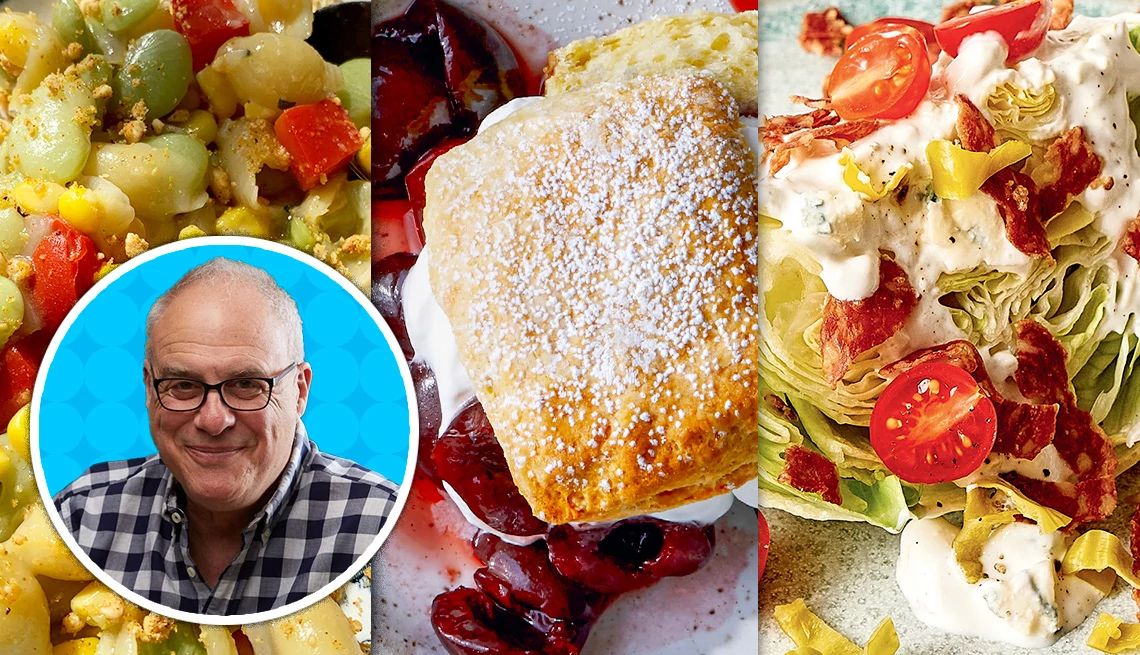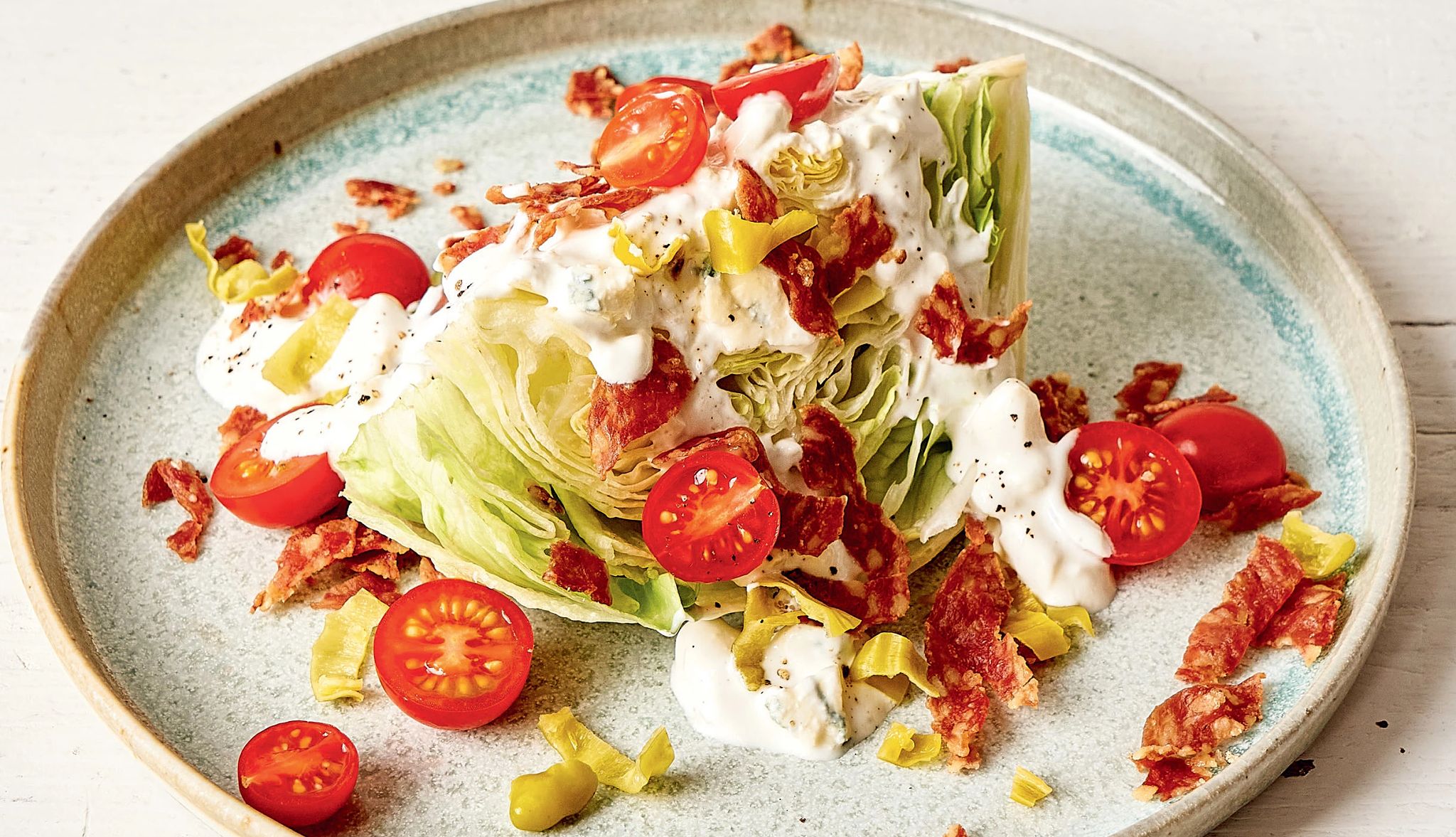AARP Hearing Center


Jump to recipes
You’d think that after 20 years of writing recipes and books based on plant-forward cooking, I’d have a catchy name for eating less meat. But my original term remains the most accurate: I am a “less-meatarian” — meaning that while some dishes are vegan, others might include small amounts of animal products, like cheese or eggs.
Legumes and whole grains provide the bulk of the protein in my diet. When I do eat fish, poultry, pork, beef or dairy, it’s almost always as a seasoning in a stir-fry, a stew or soup, or a pasta sauce. Rarely does a grilled steak take up the most real estate on my plate.
This kind of choice began as a way to pay attention to both my health and that of the environment. It’s known, of course, that too many animal products can be damaging to our cardiovascular systems (and can spawn other diseases as well), but it’s equally true that the carbon footprint of meat can be more than a hundred times higher than that of foods from the plant kingdom. “Less-meatarianism” — or, you might say, plant-forward cooking — deals nicely with all of these issues.
How, exactly, might this translate into a three-course summer fruit-and-vegetable-driven menu for two? Easily! The only meat in the recipes that follow is in the appetizer — a salad that’s a cross between antipasto and a steakhouse wedge. There are lots of cherry tomatoes, a few crisped shards of salami or prosciutto, and a creamy dressing spiked with Gorgonzola. Pasta — preferably whole grain — is tossed with a succotash and topped with chopped nuts (or if you prefer, of course, a sprinkling of cheese). Dessert is a true treat, which focuses on fresh fruit and includes a rolled — or quickly dropped — homemade biscuit and a little bit of whipped cream.
Each recipe note includes tips for making ahead or how to vary the ingredients, and all dishes are created just for two but easy to multiply for entertaining. When you take advantage of the terrific produce available now, you won’t miss a thing. And you’ll see how easy it is to be a less-meatarian, too.
Antipasto Wedge


Total time: 30 minutes
“The Wedge” is a classic steakhouse salad made with iceberg lettuce, tomatoes, crisp bacon and blue cheese dressing. This Italian-style version features Gorgonzola dressing, pepperoncini and crisp salami (or prosciutto) instead. It’s more flavorful than the original and can be prepared in little more time than it takes to crisp the meat. Croutons are the best embellishment, though the salad is satisfying without them. You can make the dressing the day before, then prep the other components up to several hours before serving; refrigerate them separately.
Ingredients
- 1 cup (or more) ripe cherry tomatoes
- 2 or more pickled peppers (mild like pepperoncini or hot like jalapeños)
- 2 teaspoons olive oil
- 2 ounces thinly sliced salami (or prosciutto)
- 1 small head iceberg lettuce (or ½ a large head)
- ¼ cup sour cream
- ¼ cup plain yogurt (not Greek; reduced fat is OK)
- 1 tablespoon freshly squeezed lemon juice, plus more to taste
- 2 ounces Gorgonzola cheese (½ cup crumbled)
- Salt and pepper to taste
Directions
Halve the cherry tomatoes and trim and chop the pickled peppers. Keep them handy but separate.
Line a small plate with towels. Chop the salami (or prosciutto) slices into small strips. Put the olive oil in a medium skillet over medium heat. When it’s hot, add the salami and cook, stirring occasionally until crisp, 5 to 10 minutes. Transfer the salami to the prepared plate with a slotted spoon.
While the meat cooks, trim the bottom and outer leaves from the lettuce, leaving the core and head intact. Cut the head top-to-bottom into quarters, rinse carefully under cold water, wrap the wedges in a clean towel. (If you’re using a large head, set aside two wedges for another use.)
Put the sour cream, yogurt, and lemon juice in a small bowl. Add the Gorgonzola and stir to combine. Taste and add a little salt and pepper and more lemon juice if you’d like.
To serve, put 2 small wedges (or one large) on each plate, cut side up. Top with the dressing, then scatter the tomatoes, peppers and salami over all and serve.































.jpg?crop=true&anchor=13,195&q=80&color=ffffffff&u=lywnjt&w=2008&h=1154)































You Might Also Like
Delicious Summer Salad Recipes
These dishes are a great way to boost your nutrient density, hit your fiber goals and add some variety to your routine
Dinner for Two by Carla Hall
Grab the recipes for Smashed Peewee Potatoes and Carrots, Hibiscus Ginger Sweet Tea Soda and more
Summer Recipes From Mark Bittman
Try your hand at Provençal Chicken, Dijon Deviled Eggs and individual Tiramisu
Recommended for You